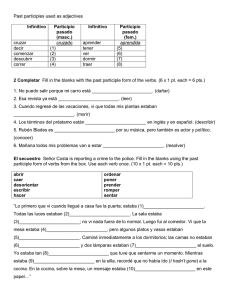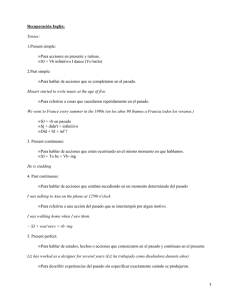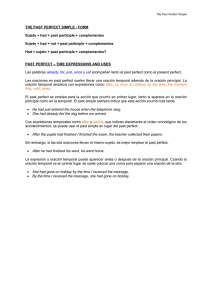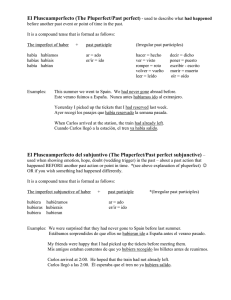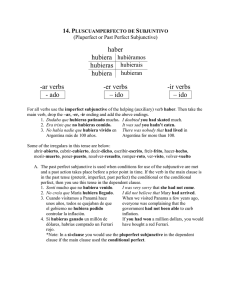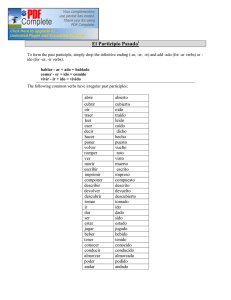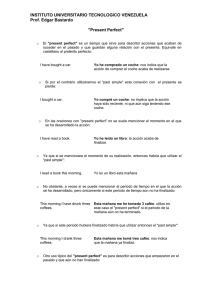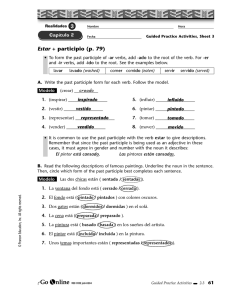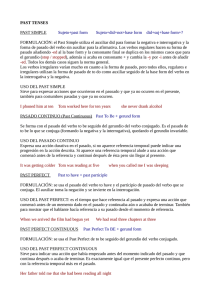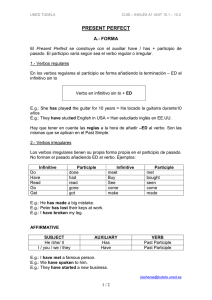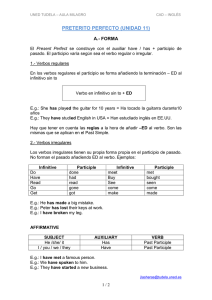El participio pasado
Anuncio
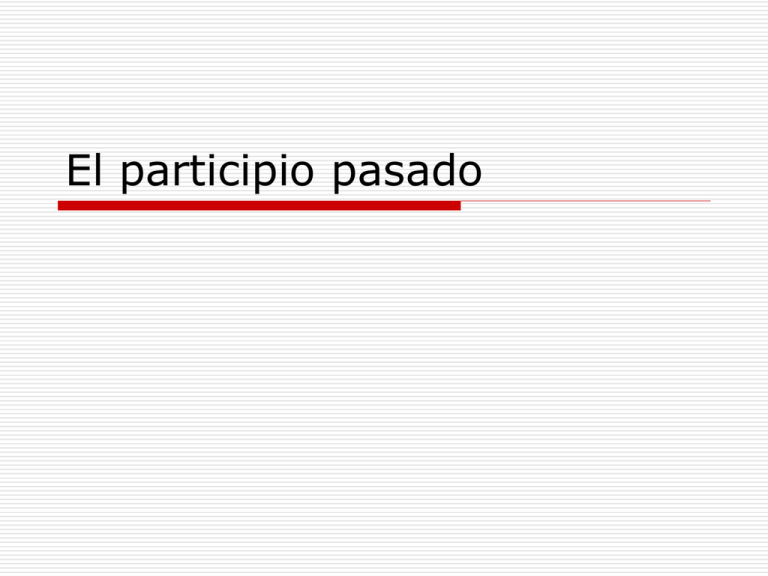
El participio pasado El participio pasado La formación de formas regulares: Drop the -AR and add -ADO Drop the -ER and add -IDO Drop the -IR and add –IDO El participio pasado Las formas irregulares: caer caído traer traído construir construido hacer hecho romper roto Decir dicho Como adjetivo Cuando está con ESTAR, el participio pasado funciona como adjetivo La lección está hecha. The lesson is complete. Las lecciones están hechas. The lessons are completed. Verbos Perfectos Cuando está con HABER, forma un verbo compuesto perfecto. haber+ past participle= PERFECT TENSE Perfecto de indicativo ¿Ya has visto la película Volver de Almodóvar? Have you already seen the movie Volver by Almodóvar? Hay tanto trabajo que todavía no hemos dormido. There is so much work that we haven’t slept yet. ¿Has viajado a Francia (alguna vez)? Have you (ever) traveled to France? Uses of the past perfect… The past perfect tense is used when a past action was completed prior to another past action. Expressions such as "ya", "antes", "nunca", "todavía" and "después" will often appear in sentences where one action was completed before another. Examples, next slide… Past Perfect Indicative …aka Pluscuamperfecto The past perfect is formed by combining the auxiliary verb "had" with the past participle. Haber había, habías, etc. + past participle HABÍA estudiado = had studied Pluscuamperfecto, ejemplos… Cuando llegaron los padres, los niños ya habían comido. When the parents arrived, the children had already eaten. Yo había comido antes de llamarles. I had eaten prior to calling them.
